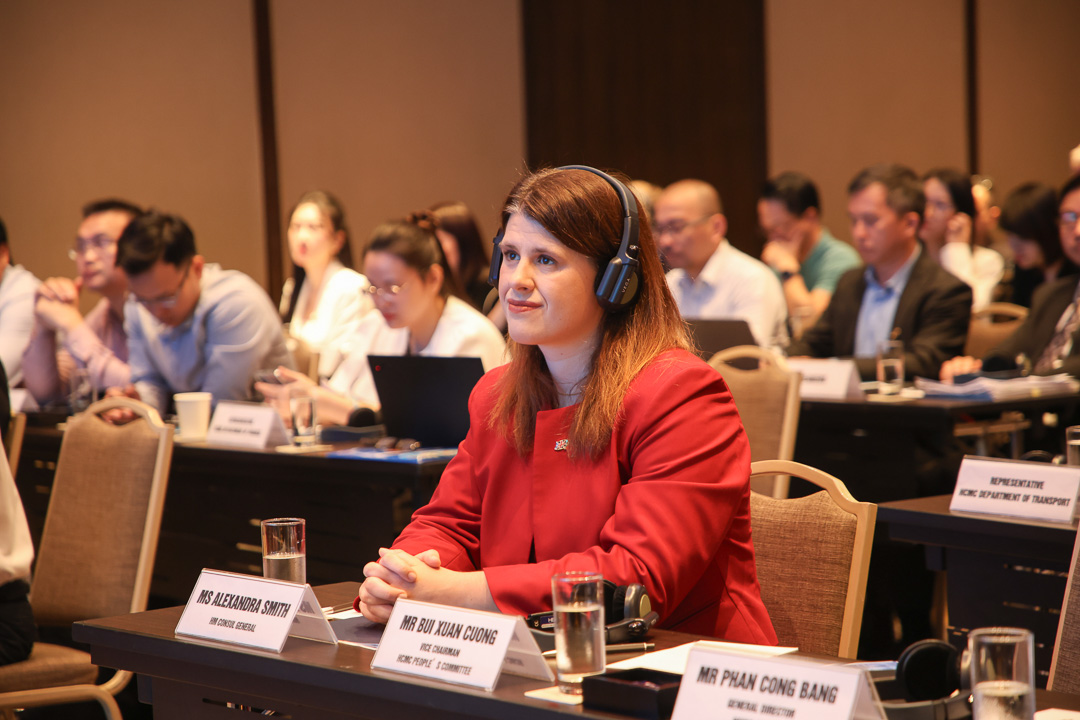HCMC – HCMC is fast-tracking its transit-oriented development (TOD) plan, aiming for full integration by 2050. The city is prioritizing public transport and designing walkable, high-density urban areas around transit hubs to enhance mobility and drive sustainable growth.
Bui Xuan Cuong, vice chairman of the HCMC People’s Committee, said the city will implement TOD projects in 11 areas along metro lines and Beltway 3 between now and 2028, with nine sites slated for immediate development in 2025. He made the statement at a workshop on TOD solutions hosted by the British Consulate-General in HCMC on February 25.
The plan aligns with the prime minister’s Decision 1711/QD-TTG and broader master plan adjustments focused on reducing congestion and improving connectivity.
“HCMC plans to build roughly 355 kilometers of urban railway by 2035. Looking further ahead, the draft revisions to the city’s master plan through 2040, with a long-term vision to 2060, incorporates the development of numerous transit-oriented development (TOD) locations,” Cuong said at the workshop.
The event gathered nearly 100 delegates from the People’s Committee and relevant Departments in the city, the Hanoi Metropolitan Railway, Management Board (MRB), the HCMC Management Authority for Urban Railways (MAUR), Departments of Transport in Hanoi, Danang and Can Tho, research institutes, experts, and businesses in the infrastructure and real estate development industries.
Public TOD is an urban development method combined with public transit, encouraging high-density urban development through the use of land around transport hubs to promote public transport, and reduce dependence on personal vehicles that support sustainable urban growth.
By concentrating development around transit hubs, HCMC aims to improve public transport efficiency while reducing reliance on private vehicles, easing traffic, and fostering economic growth, Cuong said.
At the event, Alexandra Smith, British consul general in HCMC, emphasized the importance of TOD in shaping the city’s future, noting that efficient transport systems influence everything from household spending to business investments.
“In the UK, our daily commute is always the first thing discussed around the water cooler when you go into the office with your colleagues, and it also shapes significant economic decisions made by households. Importantly, it’s not just about close transit lines and how close things are in our homes, but it’s also about how close it brings us to other key amenities, like shopping, healthcare, and schools”, Smith said.

Nguyen Anh Tuan, head of Infrastructure Management at the Department of Construction, said HCMC is entering a critical phase of urban expansion. The city aims to develop its metro system by 2030 and establish a fully integrated TOD model by 2050.
Tuan emphasized that TOD must be carefully planned around key transit hubs while ensuring strong regional connectivity. However, implementation faces challenges. The TOD framework remains incomplete, with legal and technical regulations still being refined. Additionally, lengthy administrative procedures continue to delay progress.
Recognizing these obstacles, the UK has reaffirmed its commitment to supporting HCMC’s transit-driven transformation.
“The UK has long been at the forefront of pioneering urban development solutions, including transit-oriented development, which optimizes public transport networks and reduces congestion. The UK is delighted to support HCMC in developing and implementing TOD projects along current and future metro lines. This is a crucial step toward improving the city’s public transport infrastructure and reducing its carbon footprint,” Smith said.
The UK has been assisting Vietnam’s TOD efforts through the Green Cities and Infrastructure Program (GCIP), launched last year with funding from the UK government. The UK’s private sector has also contributed expertise, while the ASEAN Leadership in Infrastructure Program has provided training on global trends and policy development, according to the British consul general.
Since September 2024, UK advisors have been collaborating with the Hanoi Metropolitan Railway Management Board on TOD initiatives under the GCIP program.
On February 19, the National Assembly passed a resolution granting HCMC greater control over its urban rail projects. Under this framework, the city will retain and reinvest 100% of revenues generated from TOD areas to expand metro lines, enhance public transit, and develop supporting infrastructure. Revenue sources will include land value appreciation, additional building floor area charges, and infrastructure improvement fees.









